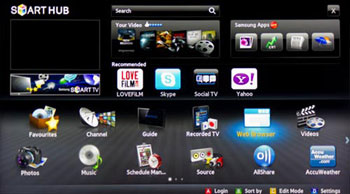As the popularity of online TV content continues to grow, so too does the use of innovative, new devices to watch it. Consumers are quickly warming to the idea that they can view a wider range of content using connected devices, at a time of their choosing, and as more people embrace this trend we’re seeing a variety of different viewing platforms come to the fore.
 |
| Smart TVs increasingly used to watch online videos |
A new report, Connected TV Study: Features, Content and Usage, by the research and consultancy firm NPD DisplaySearch, revealed that while laptops and PCs continue to be the most popular devices for viewing online content around the world, a number of other platforms are quickly catching up, including smartphones, tablets and internet-connected HDTV displays.
Riddhi Patel, author of the study, believed that Smart televisions have the edge on other devices due to their impressive range of features:
“While computers still lead the way for online content, followed by mobile devices like smartphones, our research shows that Smart TVs are increasingly becoming the viewer’s device of choice, since many of the newer models now feature built-in connectivity, or else they can easily be connected through peripheral devices like set-top boxes or Blu-rays.”
Indeed, Smart TV use has grown to such an extent that 18% of consumers in 14 global regions now use their sets to view online content on a daily basis, while 25% use Smart TVs to access internet TV “several times a week”.
Despite this, Smart TVs still have some way to go if they really want to be seen as the ‘device of choice’ for online content viewing. Some 44% of survey respondents claimed that they have no interest in using connected TVs to view online programmes, while 30% said that they do not own one. Even more pressing was that almost one third of respondents said that even if they had a Smart TV to watch online content, they would be unlike to do so.
Patel admitted that there is still a ‘general lack of interest’ among consumers in viewing online content through Smart TVs, attributing this to both a lack of infrastructure and also the popularity of other devices, such as smartphones and computers.
Rather surprisingly, NPD DisplaySearch’s study showed that of the 14 regions surveyed, online TV content was by far and away more popular in China than anywhere else. Patel speculated that this might be down to a growing interest among Chinese in watching foreign television shows that cannot be accessed in the country through any other medium.